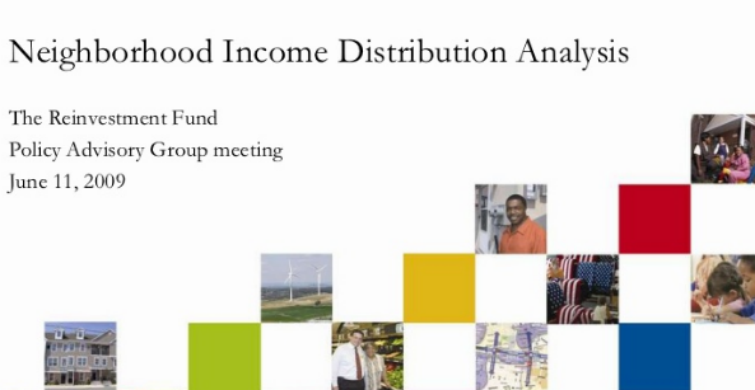TRF’s “Neighborhood Income Distribution” Analysis

TRF’s Neighborhood Income Distribution Analysis Now on PolicyMap
The Reinvestment Fund devised an analysis of income distribution that accounts for regional differences in median incomes for neighborhoods across the US. It’s located on the Maps page in the State & Local tab under TRF Policy Solutions Analyses. TRF’s analysis distinguished nine categories of income concentration types. The colors on the map indicate the typical income in a place, including low income (oranges), medium-income (blues), and high income (purples), while the saturation of the color indicates the concentration of those income types. For example, the darkest orange on the map shows areas where virtually all residents are of low income, commonly known as areas with concentrated poverty.
TRF’s Neighborhood Income Distribution Analysis is based on two indicators: (a) a given census tract’s median family income, classified based on regionally-determined income brackets, and (b) a given census tract’s income concentration level. For (a), the income classification, TRF used three income bands by region for census tracts: families making less than 35% of median family income in a given region, families making between 35% and 60% of median family income in a given region, and families making more than 60% of median family income in a given region. For (b), the income concentration, TRF developed a score to quantify the census tract level concentration of families across five income bands. We did not include census tracts with fewer than 500 households in the analysis. These tracts are shown as grey areas on the map. Each census tract was cross-classified based on (a) and (b), resulting in the nine distinct income distribution concentration types. For more information about the methods used in this analysis and the characteristics of each income distribution type, please see our TRF Neighborhood Income Distribution Analysis PowerPoint presentation, below. Please also see the Neighborhood Income Distribution Analysis entry in our Data Directory for more descriptive information about the analysis.